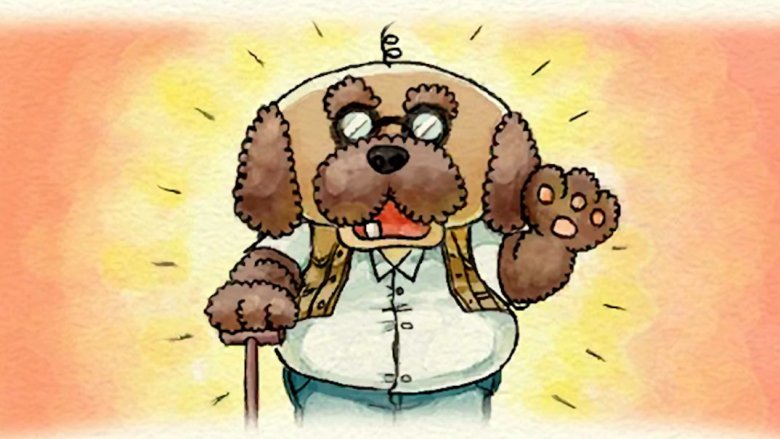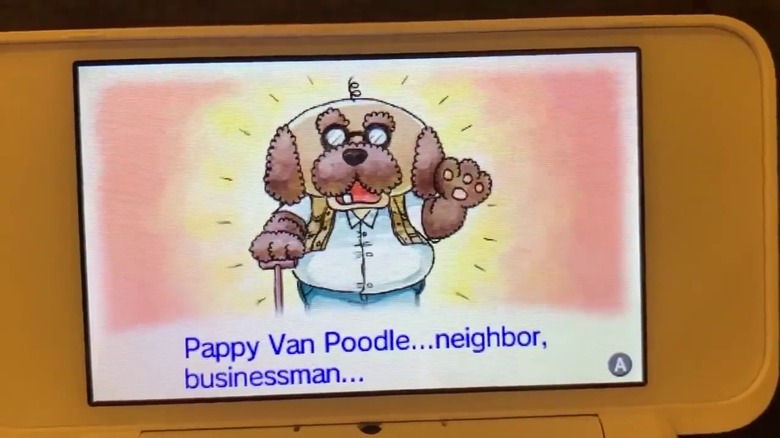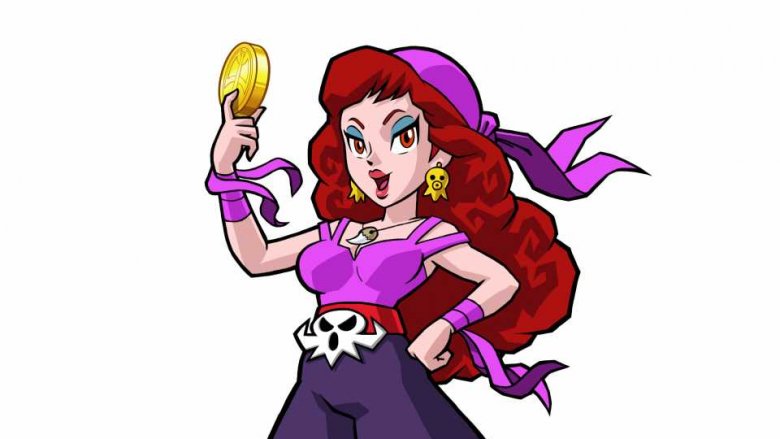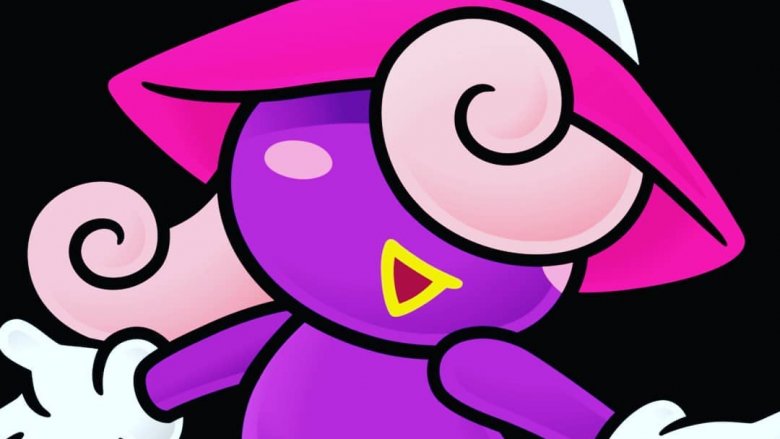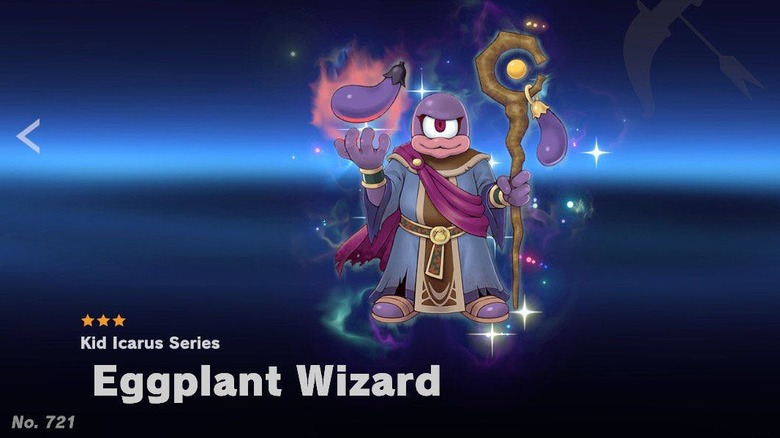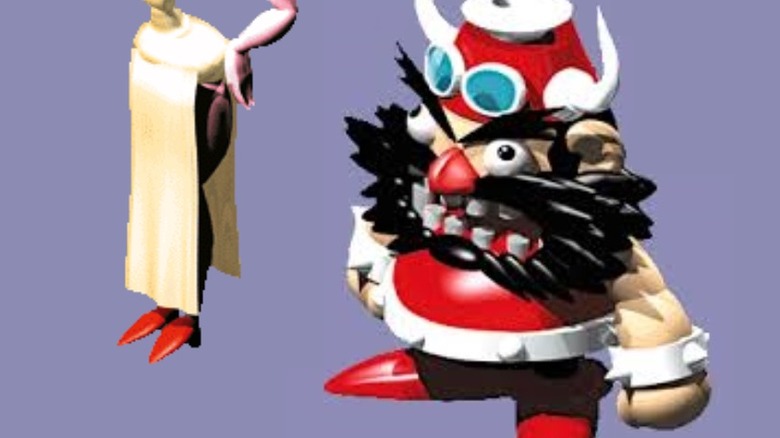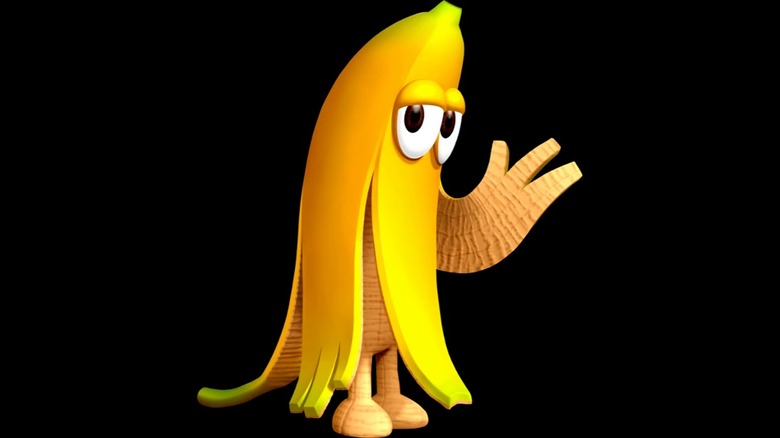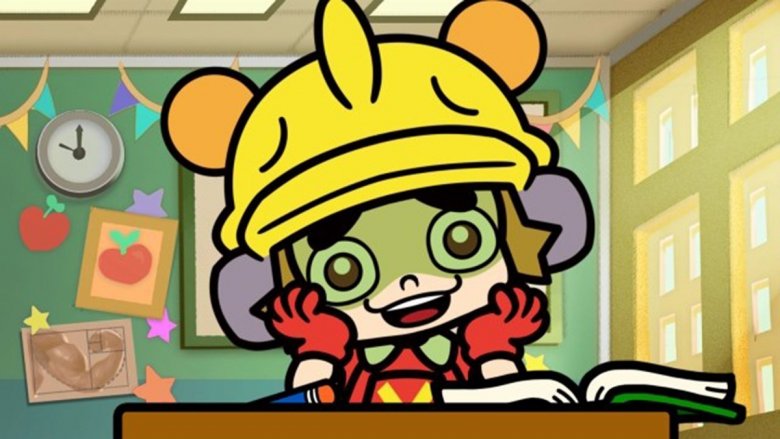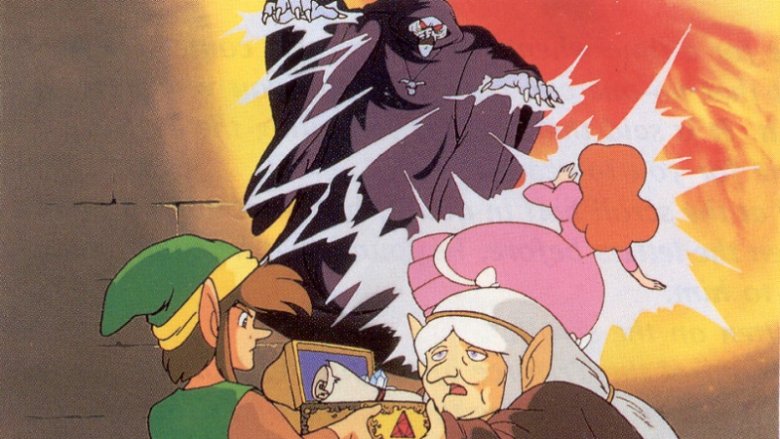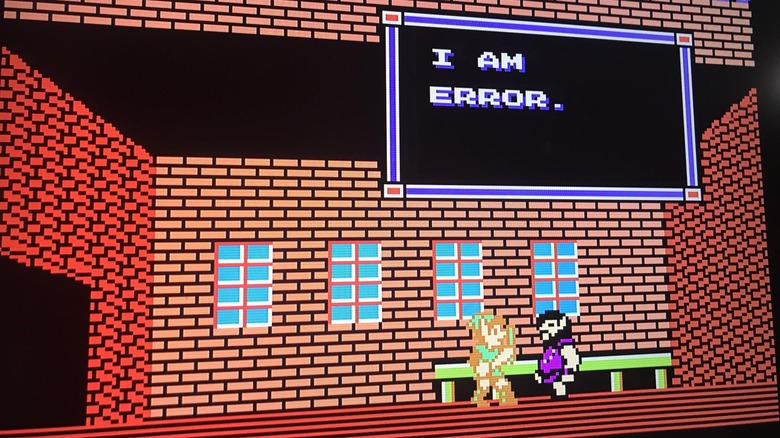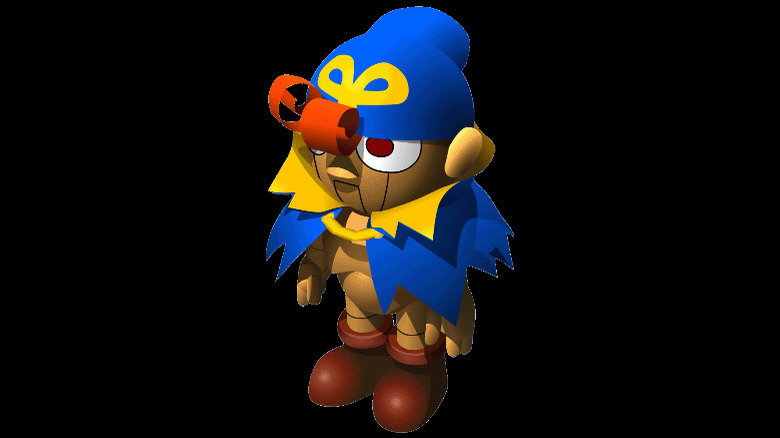Nintendo Characters Virtually No One Knew About Until Now
Every time a new Super Smash Bros. game is announced, petitions seem to pop up everywhere begging for certain characters to be featured. Sakurai himself has been hounded over the exclusion of Waluigi, and outright tantrums have been throw over subpar picks (Pichu is featured but not Skull Kid?). But here's the thing: the Nintendo universe is vast, growing steadily since its start back in '75. There are plenty of characters that haven't even had the honor of being nominated for a Smash game, let alone noticed.
We're not talking about underappreciated faces like Birdie's either. Pit and Palutena might not be near as noticeable as Mario and Luigi, but they're familiar faces. No, we had to dig deep, deep into dusty Nintendo lore in order to find these strange characters buried in obscurity. If you can recognize them, we concede that you've got to be some kind of superfan.
Pappy van Poodle has been hidden by haggling
Rusty's Real Deal Baseball is less about baseball than it is about haggling. The concept sounds like an EA wet dream: players must buy minigames from Rusty, a retired baseball player, for real money. With some smooth talking and doughnut bribery, players can talk down the price from $4, the most silver of tongues getting the games for a steal at less than $2. Before you cry foul at the microtransactions, remember that poor Rusty is just trying to make a living. Trying to get hip with the kids, he bought sports games, and the investment hasn't really paid off. His wife left him with their litter of ten identical pups.
Now Rusty himself isn't all that rare, being the main character of the game, however unpopular the title might be. Rather, there is a semi-hidden character that will help him out if you, the player, don't provide the means with which to move the plot forward. See, when you bargain with Rusty, you can tempt him with items that will progress the plot. However, if you're a mister moneybags and buy all the games for full price, then Pappy Van Poodle will be summoned in order to give Rusty the items he needs. An old dog with glasses and a cane, Pappy is perhaps one of the most rare Nintendo characters of all. The game was released in 2013, but Pappy has been more or less hidden since. Only a recent discovery by a YouTuber unearthed his existence.
Wario's true enemy: Captain Syrup
In Wario Land: Super Mario Land 3, Mario himself is utterly absent. Instead, Wario takes center stage in a tale of greed, pirates, and castle renovations. We don't blame you if you haven't heard of it, either, because the game is older than some of our writers: released in 1994, the 2D platformer for the Game Boy was well received, even earning Best Theme and Fun in the 1994 Nintendo Power awards. But even though we've gotten to know Wario over the years, who we don't know nearly as well is his mortal enemy: Captain Maple Syrup.
Move over Captain Toad, and step aside Princess Peach: this beautiful Captain has looks that can kill and a crew who will do her dirty work. The Brown Sugar Pirates are anything but sweet; they're just as greedy as Wario. Captain Syrup is one of the first female antagonists in a Nintendo game and a recurring character. She always vows revenge upon defeat, serving sometimes as the final boss in Wario Land games. A formidable foe, she is something of an inventor, able to create machines designed to trip up mustachioed enemies. She changed her ways (kind of) and her look (drastically) in the 2008 title Wario Land: Shake It! when she gave Wario access to the parallel world Yuretopia in order to shake it down for all it was worth.
Nintendo's transgender representation: Vivian
Paper Mario: The Thousand Year Door isn't only a fantastic RPG, it's also a hugely progressive game. We don't exactly look to Nintendo to be a leader in representation, but they provided the platform for one of the first trans characters in gaming. In Paper Mario, players are able to collect and switch out a bevy of party members with their own powers and personalities. When Mario is in his darkest moment, isolated from his friends and confronted with a shadow of himself (literally), he finds an unlikely friend in the form of Vivian. Vivian is one of the Shadow Sirens, a group of witches specifically trying to thwart Mario's search for the crystal stars.
Vivian's sisters, Beldam and Marilyn, ruthlessly bully her. It's confusing and written off as a kind of sibling rivalry in the North American localization of the game. However, the original Japanese version reveals the full picture: Goombella's Tattle ability gives the following description for Vivian: "One of the shadow group, Vivian appears to be a girl but is really a boy."
Further dialogue confirms that this is the reason why her sisters bully her. When she tries to identify as a shadow sister, Marilyn shouts her down, calling her a man and that she needs punishment. It's this abuse that ultimately leads her to teaming up with Mario, the only person to ever show her kindness and accept her as she is: a super cute shadow sister.
Pit defeats his vegetables, including the Eggplant Wizard
Maybe you're more familiar with Pit through the Super Smash Bros. games rather than the actual three Kid Icarus games. For the uninitiated: the series centers around a battle between Palutena, the Goddess of Light, and Medusa, the Goddess of Darkness, in Angel Land, where gods and monsters live together. In a totally shocking turn of events that we're not being sarcastic about at all, Medusa ends up being evil and takes over with her hideous cronies. Pit must try to free Palutena by defeating enemies like Reapers and ... Eggplant Wizards.
Yes, you read that right. Like a one-eyed Thanos, these purple monstrosities have the power to throw around magical eggplant projectiles and even turn Pit himself into an eggplant. This is a real inconvenience, but can sometimes come in handy because itty bitty eggplants can fit through passages that full-fledged Pits cannot. Eggplant Wizard's design has evolved since the first game in '86, but his powers have remained largely the same. He's been turning people into vegetables for decades and shows no signs of stopping. We don't remember this particular figure from Greek mythology, but he's just as scary as any gorgon or cyclops.
Real axolotls are cuter than Dr. Shrunk
Know what an axolotl is? Quick zoology lesson: these little frilly-gilled salamanders are native to a very small area in Mexico and are critically endangered. Captive-bred axolotls are popular pets, however, and have even made appearances in Nintendo games. Specifically, Animal Crossing: Wild World introduced Dr. Shrunk, a buck-toothed, unibrowed frilly-gilled axolotl. Seriously, real axolotls with their blank faces and little limbs (which they can regenerate!) are way cuter than Dr. Shrunk.
Dr. Shrunk is a shrink of sorts, getting players more in tune with their emotions, teaching players new ways to express themselves. In later games, he's less interested in psychology and more interested in comedy. Giving stand-up a try in City Folk, he goes on to own Club LOL in New Leaf, where he and KK Slider perform (the latter being the overwhelmingly more popular act). There are occasionally hecklers in the audience, but they don't appear to bother him. Despite his bad puns, Tom Nook goes as far as saying that Dr. Shrunk is loved by everyone, "an amazing fellow who has accomplished a lot."
Booster the Seventh isn't the brightest star
Say hello to the most ... handsome face on this list. In 1996's Super Mario RPG: Legend of the Seven Stars, Booster is yet another dude trying to forcibly marry Princess Peach. At the beginning of the game, Bowser did his thing and kidnapped her. In turn, Mario did his thing and rescued her, but a giant sword sent them all flying. Peach ends up in Booster's tower, which is a "famous tower of amusement," according to Booster. Booster is a Viking-like brute who lacks serious stats in the brains department. If you couldn't tell by his unchanging expression, he's not the brightest crayon in the box. He thinks that drinking punch and eating cake at his wedding reception "sounds complicated."
Being something of a villian, Booster is naturally determined to marry Princess Peach, who he sees as a gift from above. It takes the combined might of both Mario and Bowser to navigate the tower and save Peach from yet another shotgun wedding. Although Booster isn't exactly a memorable character, there is a noteworthy moment where it's possible that he may just accidentally kiss Mario.
Xananab is the only off-limits banana for the DK crew
Monkeys and apes love bananas. As Sonic is to rings, so are the Donkey Kong crew to bananas. With these facts in mind, we must acknowledge one of the most confusing characters in DK Jungle Climber. The 2007 DS game has the fairly simple mechanic of having the player's chosen Kong character climb up as high as possible. Donkey Kong, Diddy and Dixie Kong, Cranky Kong, Funky Kong, and even King K. Rool are featured. But these are all old, familiar characters. There was one questionable addition to the game that hasn't made an appearance since.
Xananab is a rather forgiving alien banana. Even though Donkey Kong destroys his ship, he gives him hints and advice throughout the game. We wonder how trippy that is for Donkey Kong, who eats bananas on the daily, to get advice from what's essentially a giant banana with eyes. The character hasn't made an appearance since, and that might be for the best, lest an appetite for potassium gets the better of the Kong family and Xananab winds up on the menu.
Doshin the Giant lets you play god
In order to remember Doshin the Giant, you've either got to be a collector of ultra-rare Nintendo games or from somewhere outside the US and Canada. North American fans might look at this happy-faced behemoth and say, "Seems fake but okay," because we're going to be honest: Doshin is weird. He's the reincarnation of the sun, a god of good deeds. Native islanders worship him and shower him with hearts depending on how altruistically the big, yellow giant behaves. While Doshin is the "Love Giant," Jashin is the "Hate Giant" and is showered with skulls for bad deeds. Jashin comes in to wreak destruction when your followers have committed crimes and are in need of divine retribution. Talk about playing god.
It's a unique concept with moral motivations: the bigger Doshin is, the more he can protect his people from fire and hurricanes. And the more cuddly his noodle-armed hugs are. As the player, you have total control over the treatment of an entire island population. With great power, comes great responsibility that you're totally free to abuse. Doshin didn't make it to America for purely technical reasons; there was no uproar over kids showing sociopathic tendencies as they set their villagers aflame like ants with a magnifying glass. Rather, Doshin the Giant was one of the few 64DD games, a Japan-only rewritable expansion to the N64, allowing for only Japanese children to play a blank-faced yellow god of goodness (though European kids later got a GameCube port).
9-Volt is a Nintendo fan within a Nintendo game
Nintendo is no stranger to promoting its own characters and products within its games. Every new Pokemon protagonist has their very own Nintendo Switch on display in their rooms, after all. But did you know that there are Nintendo fans within Nintendo games?
In the ridiculous, random series of mini-games within the WarioWare series, there are just a few mainstays that tie the games together as a series. Other than Wario himself, there are a few recurring characters like the blue afro-ed Jimmy T. and the little witch Ashley, who is featured as an assist trophy in Super Smash Bros. Ultimate. Their appearances alone make them recognizable characters, but do you remember little 9-Volt?
9-Volt appears in a ton of WarioWare mini-games, wearing his signature helmet and a superhero-esque outfit. The games that he frequents are typically based on NES and Super NES games, because he is a self-professed big fan of classic Nintendo games. "I'm the grade-schooler gone old school!" he declares in WarioWare, Inc.: Mega Microgame$!. When he's not playing Nintendo games, he lives with his mom 5-Volt, who also loves video games, in Diamond City, leading an otherwise normal life.
The prince of Hyrule isn't Link
By now, we're all more than familiar with the princess of Hyrule herself, Zelda. She was the only child of the king of Hyrule, destined to inherit the throne and all the power that comes with it ... or was she? No, this isn't a conspiracy theory about Link being her brother. Rather, in the second game of the Legend of Zelda series, Zelda 2: The Adventure of Link, we find out that in this moment of the twisty-turny timeline, Zelda has a brother. And he sucks.
First of all, the prince of Hyrule doesn't even have a name. He's just Zelda's brother, the prince, and unfortunately his father's heir. While Zelda is clearly the better choice to rule Hyrule, having a first name and all, the prince becomes the monarch after the king's death. His first royal mission? Find the missing Triforce of Courage that the old king hid in the Great Palace to keep it from falling into the wrong hands (cough cough, the prince's, cough). However, only Zelda was given the knowledge of its location. The prince hates this, and tries to extract the secret from his sister. When she doesn't yield to him, he uses the power of a magician. The magician places her under a sleeping spell and conveniently dies soon after. Now Link has to do all the work and wake the sleeping beauty Zelda by uniting the Triforce of Courage with the Triforce of Power and the Triforce of Wisdom.
Error of Ruto: error or cool fantasy name?
Even as the settings grow and change, as the games went from pixels to expansive, The Legend of Zelda series continued to invoke familiar faces and names to connect the seemingly disparate games into a single, twisty timeline. Link will always be our protagonist, Zelda has maintained the role of wise princess, Impa has been along for each journey, and we can always go visit the Ruto and find good old Error at his forge, right? Wait, who's that last guy again?
Another strange, obscure face in Zelda 2: The Adventure of Link, a blacksmith in Ruto Town introduces himself with, "I am Error." Combined with another character named Bagu (a form of "Bug"), and it appears the game's designers were having a bit of fun. Tired of seeing bugs and errors in their game all the time, they decided to put them in officially. Or at least, so it seems.
Geno is heaven-sent (and creepy)
Nintendo is usually fairly kid-friendly, but has been known to wander into dark territory. Just think about all those terrifying descriptions of certain Pokemon and the fact that even in a fluffy, carefree game like Yoshi's Crafted World, there are enemies wielding knives. Knives! That's worse than running with scissors. What's even worse, perhaps, is the blank, possessed face of Geno. Originating in Super Mario RPG: Legend of the Seven Stars, he is something "sent by 'a higher authority' to restore peace to Mario's world" that is possessing a child's doll.
Despite his blank, staring eyes and strange design, Geno fancies himself as a true hero and behaves with all the confidence and enthusiasm of a protagonist. He might be forgettable to most players, but this strange little guy has a place in Masahiro Sakurai's heart. Geno was considered for Super Smash Bros. Brawl and a costume based on his likeness was added in DLC content Super Smash Bros. for Nintendo 3DS / Wii U that could be worn by Mii Gunners. That's right, you too can look like an obscured possessed doll.

